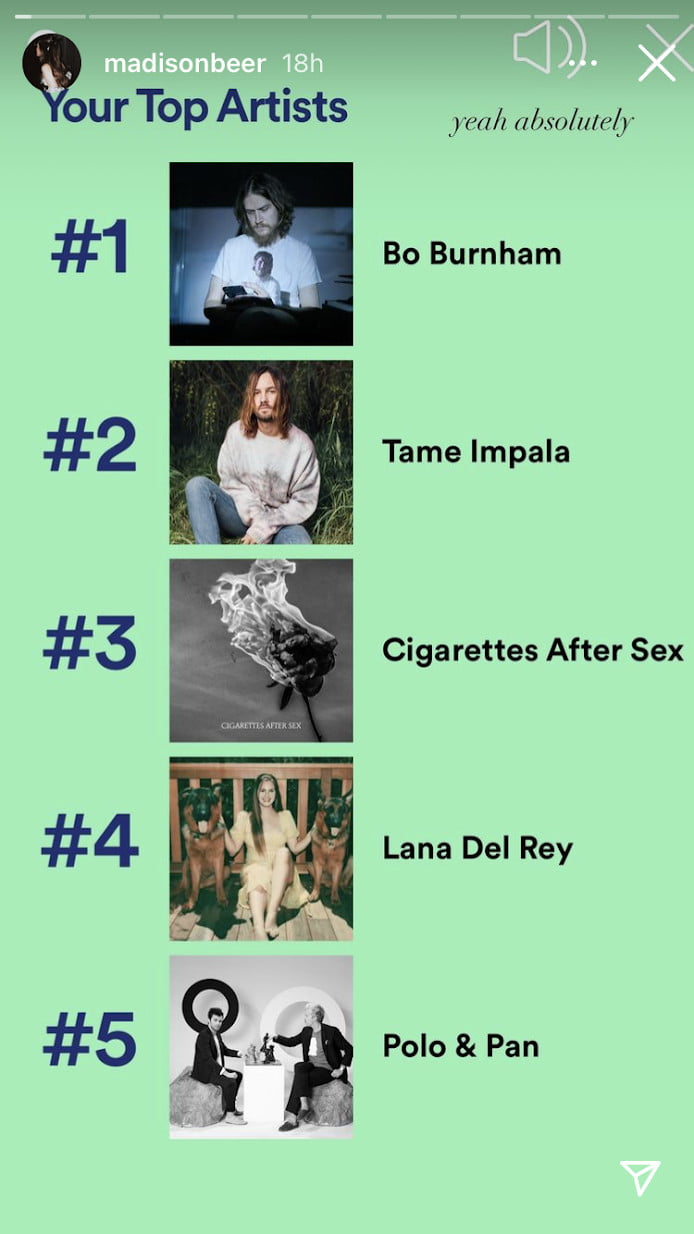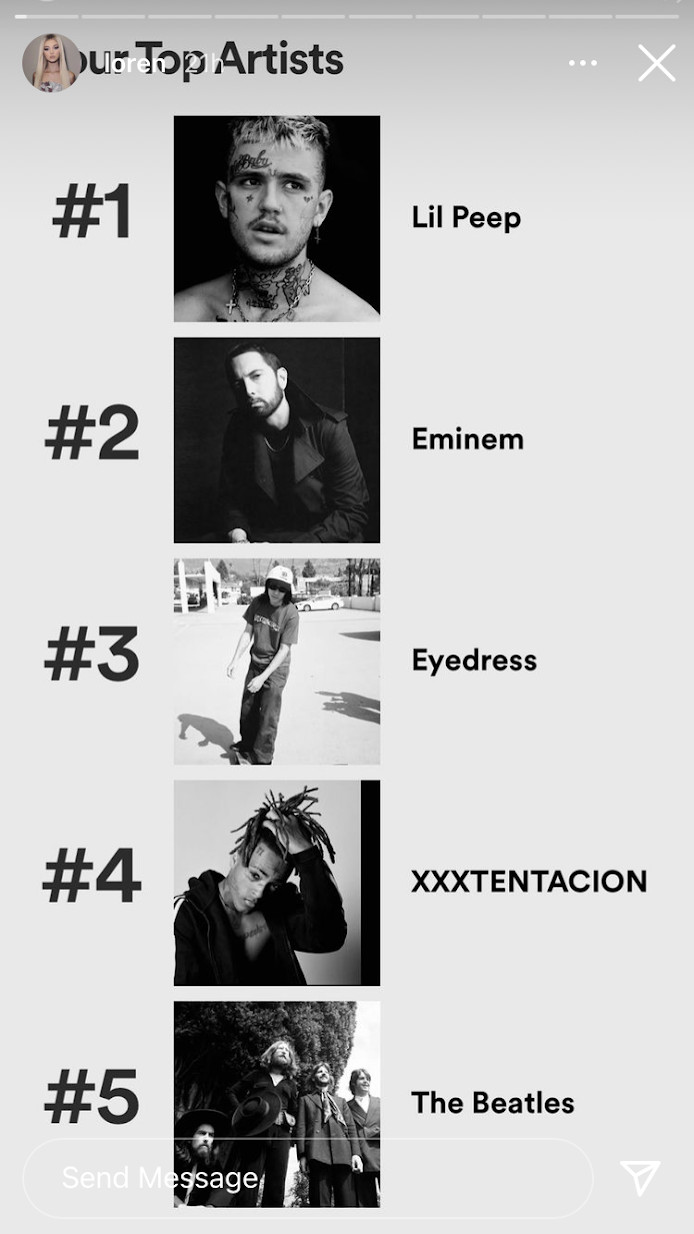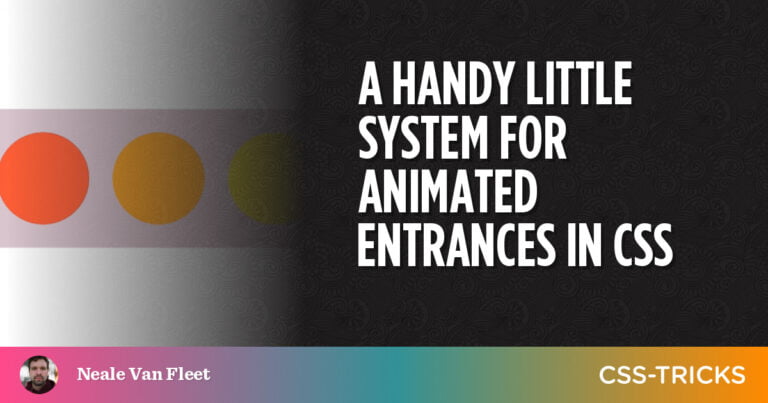When Spotify Wrapped came out in 2017, it hit my group chats like breaking news. A friend frantically sent me a screenshot showing they were in the top 1 percent of Frank Ocean listeners with a message, “CAN U BELIEVE THIS,” followed by a deluge of texts from other friends, highlighting their streaming accolades. Not long after, people all over the internet were sharing their listening results. Instagram stories were filled with streaming statistics that either poked fun at lowbrow taste or flexed artistic inclinations. (I admit, I too shared my own.)
Spotify originally released their first iteration of Wrapped in 2015 as “Year in Music,” a feature for users to look back through their last 365 days via the songs and artists they listened to most. The tool included statistics like the listener’s most played songs and how many hours of music they listened to in total. While popular, Year in Music didn’t quite go viral, not until it was upgraded two years later to the customizable, jazzy graphic release it is now.
Now, Spotify Wrapped has become an annual tradition, marking the change of seasons the same way beloved cultural staples like Starbucks holiday cups or Mariah Carey mark the holidays. But as Spotify’s feature rose in popularity, so did a growing discourse about algorithms, the use of which has become standard procedure on social media, and which Wrapped relies on.
An algorithm takes a set of inputs and generates an output, the same way a recipe turns ingredients into a cake. For Spotify to rely on algorithms means it uses data from its consumers to generate music discovery delivered through playlists. Open Spotify’s home page and you can find any number of curated playlists that source user data collected from the app, from “Top Songs in the USA,” which aggregates collective data, to “Discover Weekly,” which draws from personalized data. To create these playlists, Spotify tracks the music you listen to, organizes it into certain categories, measures tracks against other listeners, and uses that information to choose what music to show you.

Spotify’s algorithmic delivery was what initially set it apart from other music streaming platforms, often cited as an important factor in the app’s success in spite of how it relies on tracking data. One user of the app, Kiana McBride, 22, told me, “My Discover Weekly is often fire. Spotify has such good data analytics, it can tell what music I’m likely to enjoy.”
While tracking music data doesn’t seem too murky at first glance, the use of artificial intelligence has been proven to discriminate. Reports have shown how artificial intelligence can be encoded with bias and perpetuate racism. When coupled with video technology or security software, algorithms have also played an integral role in bolstering surveillance capitalism. There have even been reports indicating how the platform’s feature is inaccurate and nefariously marketed. Still, Spotify Wrapped goes viral. Our collective enamoration with this recap reveals the extent to which algorithms have become integrated into the way we conceive of ourselves in digital consumer culture: as brands to be refined.
According to P. David Marshall, a new media and communications professor at Deakin University and a leading scholar on online identity, the concept of “dual strategic personas” deeply informs how people approach what they share on social media. “Dual strategic persona [uses] the word in both ways,” he told me. “Dual as in two, and duel, meaning you’re actually beginning to play in a space that understands the algorithmic transformations.”
Consumers increasingly understand that how they use an app influences the type of content they see, creating a digital double consciousness, where “we realize we’re a digital construction,” but we also realize that “a digital construction is connected to who we are — who we think we are,” said Marshall. In essence, our online selves are still an extension of ourselves; it’s not not a version of personhood. At the same time, it’s a version that is inherently manufactured and performative.
And as is the nature of performance, those on stage are called to act incessantly. We strategically construct a certain perception of ourselves through snippets that, with the help of Spotify Wrapped and other algorithms, become increasingly refined. For instance, sharing a Wrapped roundup on social media can position a person in a particular niche: indie; punk; rock. If the music genres are even more obscure, then that person can move themselves into hyper-specific niches: folktronica; cloud rap; Japanese city pop.
One user of the app, Alfonso Velasquez, 22, told me he loves viewing other people’s Spotify findings because in comparison, “it makes him feel more indie.” He’s speaking to an instinct to curate a brand out of himself — an instinct derived from dominant influencer culture.
[embedded content]
“Influencers are in that dual persona structure, working between a corporate version of themselves and a highly individualized version of themselves,” said Marshall. Because of this, they’re “changing our wider transnational culture as to what is normal.”
Another user, Isabel Edreva, 21, told me they view other people’s Spotify findings to “take recs.”
“If someone I really respect has a top song I’ve never heard of,” she explained, “I’m like, ‘Okay, I should listen to it.’”
Many people do not register taking recommendations from Spotify Wrapped as being influenced. But that is the crux of influencer culture.
“We begin to do variations of those things that influencers do,” said Marshall. “They become our way of trying to understand online life, and the way that we begin, as ordinary people, to reconstruct our notion of a differentiated persona.” When internet celebrities such as singer Madison Beer, Musical.ly star and singer Loren Gray, or TikTok-viral musician Laufey post their streaming results, the practice catches on even quicker. Spotify Wrapped is just one example of how the habits of influencers, from what they post down to how they post it, becomes a particular guidebook for everyone on the internet, regardless of who you’re following on social media.
Spotify makes participating in this culture even easier. With a single tap, the content — already made in various coordinating colors — can be shared. The eye-catching graphics are pre-generated. Users can reveal a little about themselves with low stakes and minimal participation, thoughtlessly mimicking how influencers mine their likes and interests to become a brand.

Perhaps it’s this seamless participation with instant brand-building rewards that makes the suspiciousness of having your data tracked on the platform pale in comparison. “It’s just songs,” a user of the app, Sophronia Barone, 21, told me. “I guess it’s no big deal.”
Is it just songs, though? When analyzing the back end of the app, a team of five researchers behind the 2019 study “Spotify Teardown: Inside the Black Box of Streaming Music” made clear that algorithms do not exist in a vacuum. They wrote, “Scholars have demonstrated how algorithmic content delivery has implications for the production of gender, race, and other categorizations. Users are invited — or obliged — to have their listening habits turned into “taste profiles,” which are measured using a set of parameters.”
Spotify has not made public what these categories are, but the academics ascertained that gender is certainly one of them. They noted that Paul Lamere, the director of the music intelligence and data platform, Echo Nest (which was acquired by Spotify in 2014), provided data based on listening habits by gender in a 2014 blog post. The researchers found that self-reporting your gender is a mandatory part of the platform’s sign-up process and, further, is listed as one of the types of information that Spotify collects and shares under their privacy policy, “indicat[ing] that gender is perceived as vital to the functioning of Spotify, at least for marketing purposes.”
They also discovered the company knows your IP address, meaning location, nationality, and by proxy, social class. Another study by the Bank of England found that Spotify data can even reveal user moods. It’s not unreasonable, then, to assume that Spotify can deduce a good chunk of your socioeconomic demographic, narrowing down ethnicity, age, and perhaps even sexuality if you listen to specific podcasts, like Spotify’s popular Queerology. (And after a priest’s sexuality was recently outed by a Catholic publication via his phone’s location data, it’s clear that this information has real-life consequences.) Spotify then capitalizes off that information by selling it to companies, to which demographic profiles are akin to gold.
Spotify, of course, isn’t the only company to find success at marketing algorithms back to consumers: Everything from DigiScents, which promises to perfume your home based on your web browsing history, to TikTok, the most popular social media app of the moment, is all about algorithmic-based viewing and encourages us to buy a ridiculous amount of stuff. Meet AI culture, the new age of digitized capitalism, where the consumer is endlessly stuck in their own feedback loop. If you open an app, you inherently give companies free labor in the form of web traffic, AdSense, and taste profiles, only for those apps to sell your profile and user identity — what is essentially you — to others and then eventually, back to yourself. These companies push us toward algorithmic-based viewing, and not only do we lap up what their data reveals about us, but we also eagerly share it for others to see.
We do so in the name of self-branding. Because in the end, we get one more quantifiable piece to add to our ultra-specific, online persona. For a fleeting moment, we can all be influencers, too. “I like that Spotify is sharing their stats with you,” said McBride. It’s “like you’re an MLB star for listening to music.”






